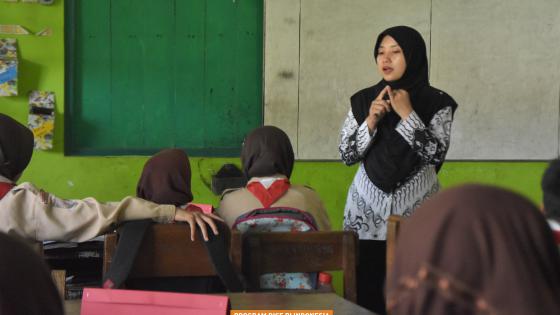Photo illustration: Tony Liong
This article is part of the Teachers' Notes series on the greatest challenge in teaching as a beginning teacher.
My greatest challenge as a teacher is teaching a student with special needs. In my class, there is one student with special needs whom I call a special child. Every day, the child scribbles on his notebook. He would sometimes come out of the class and run around the school, passing other classes. When teachers reprimanded him, he threw a tantrum and ran again.
At first, I did not know that he has a different condition from his peers. He could not focus on his study and sometimes would throw tantrums for no reason. When I asked the other students, they told me that the special child had shown such behaviour since he entered the school.
Understanding the Student's Condition
To understand the condition of the special student, I invited his parents to the school to talk. They said their child had been diagnosed with autism and attention deficit hyperactivity disorder (ADHD) by a psychologist. He has many dietary restrictions and has to take medications.
The student used to undergo routine treatment. However, after his parents divorced, he is no longer undergoing treatment and does not take his medication regularly. His condition has become more difficult to control since then, and he frequently throws tantrums.
The student is now living with his grandmother. Both his grandmother and his mother refuse to recognise the child as someone with special needs. Because the student's parent is unwilling to provide a statement regarding his special needs situation, the school must treat the child the same as other students, with the same standard.
Such situation is a dilemma for teachers. We want to provide appropriate education for the student, but there is no support from the family. During the last semester, the student was unable to attend the regular lessons.
Different Teaching Approach
I've tried various methods to teach this special student. I tried the scientific approach by encouraging him to observe, gather information, reason, and communicate his findings. At first, this effort ran well. However, the student had difficulties in communicating and working together with other students in his group.
I then tried the contextual teaching and learning approach, context-based learning. I tried to dig into what the student feels in his daily life, but this effort was futile.
Every attempt I did failed because he is indeed different. He needs a learning and assessment system tailored to his condition. However, teachers are unable to provide it because, by rules, the family has to provide a statement that the student has a special condition.
Needs a Special Approach
I once saw the special student draw and I think it was very good. He looked focus while drawing as well. I think if there is a special approach, an educator can help the student to develop his drawing talent.
To this day I’m still trying to convince the student's parents that he needs a special education service. As a teacher, this is the greatest challenge I have faced to date.
*This Note was written by WI, a primary school teacher in DKI Jakarta.
**All articles published in the Teachers' Notes are the views of the authors. They have been edited for popular writing purposes and do not represent the views of RISE Programme in Indonesia or RISE's funders.









